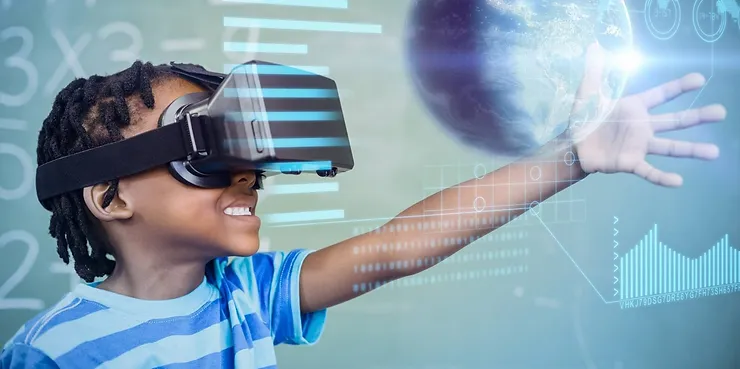Imagine exploring the largest ancient amphitheater in the world or how blood moves through the human body. These Technology-enabled experiences are now possible with the use of Virtual Reality.

People are constantly searching for new ways to make knowledge transfer easier, quicker, and more effective. In the digital era, we have an opportunity to get better with technology. The use and integration of Virtual Reality is growing in popularity and is profoundly impacting our world. VR in the medical and military sectors have grown to heavily rely on VR practices in recent years. With this increased uptake, VR could have a massive impact on education influencing students’ learning outcomes.
So what is VR? Virtual Reality is described as a computer-generated three-dimensional environment that simulates the physical presence of people and objects to generate realistic sensory experiences. In simple terms, it is a technology that allows the user to have immersive experiences interacting with 3D models simulating real-life environments.
Virtual Reality has been used widely in the corporate world since the technology first became available, but because of financial limitations the use of VR in education was simply not feasible, but in medicine field VR has been used in situations such as operating theatres.
In a modern world with diverse platforms for innovations and solutions, technology is shaping the future of education. It continues to manifest new tools such as Virtual Reality in students’ learning experience.
Statics from a national survey shows that 90% of educators agree that VR technology is quite an effective way of providing differentiated and personalized learning experiences for students. In a recent research, 97% of students voted that they would attend classes with VR considering the current situation with covid-19 they see VR as the future of education. Education is expected to be the 4th largest sector that will invest in VR. The statics are predicting that by 2025, VR in education is to be a 700M$ industry.
How is VR & AR changing the education system?
While on average a regular student can remember 30% of what they hear and 20% of what they see and VR statistics confirm that students remember 90% of the material if it is learned through VR experience. Maresky, Oikonomou, Pakkal, and Ballyk’s (2019) paper: Virtual Reality and cardiac anatomy exploring immersive three-dimensional cardiac imaging pilot study in undergraduates demonstrated higher learning outcomes for those who had participated in the immersive VR experiences. As per many other research’s the greater positive outcomes have been found in the groups that engaged with VR scenarios. VR technology is making lectures, books, and exercises more immersive, interactive, and engaging and they are becoming a feasible solution for seizing student’s focus and attention.
Concluding that interactive Virtual Reality based experiences are an inexpensive and effective means for teaching students.































